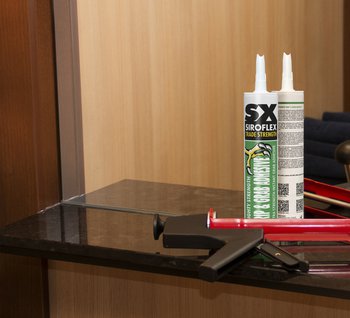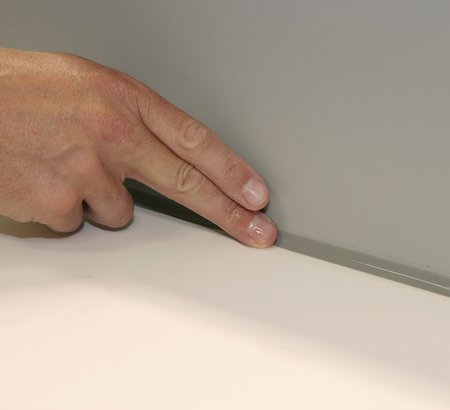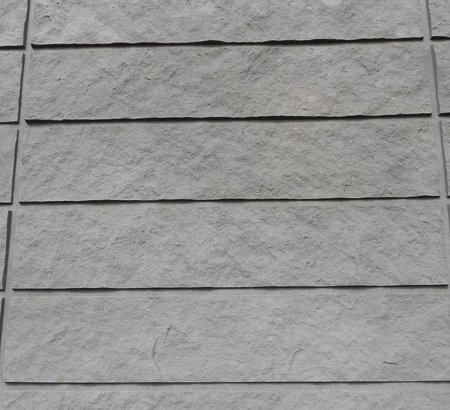Mirror bonding

As, for esthetical reasons, mirrors are mostly applied to walls and doors without any mechanical support, special adhesives are used to fasten these mirrors ”invisible” onto the supporting surfaces. Mirrors are sensitive products, because of which not every mirror can be glued with every glue onto every surface. It is evident that care has to be taken. The information given below will be helpful to achieve a good result.
The Mirror
The mirror is made of glass. On the back of the mirror a silver-layer and mostly a copper- layer are applied which are covered/protected with special coating layers. The silver- and copper layer are sensitive for contact with water, moisture or chemical fumes or liquids. In case of contact, these metal layers can be attacked which will show through dark or hazy spots in the mirror. To avoid this attack the metal layers are to a certain extend protected by the special coatings, although a 100% protection can’t be achieved as this will depend on the circumstances of a particular application as well (See the instructions of the mirror manufacturer as well).
In this Technical Bulletin it is assumed that the quality of the mirror does apply to the DIN EN 1036 . (For other mirrors or safety and plastic based mirrors do contact the mirror- and adhesive manufacturer).
The adhesives
As adhesives for mirrors, only certain products, that are not aggressive towards the coating or metal layers, can be used.
Nowadays solvent free adhesives are mainly used. These products do combine a good bond strength with a certain flexibility which will allow a difference in movement between the mirror and the substrate it is glued on.
The product we recommend is:
- Zwaluw Mirrofix MS
- Zwaluw Hybrifix
Surfaces
The surfaces the mirror has to be glued on, do have to meet certain requirements like:
Sufficiently even, so the mirror can be applied without tension. (Smaller irregularities can be picked up by the adhesive).
Sufficiently strong (stronger than the force that will be supplied to the substrate by the weight of the mirror).
Free of dust, grease and dirt.
Sufficiently dry.
(For example a layer of stucco on a wall has to be dry enough to make sure that no accumulation of water can take place behind the mirror)
Although the adhesives do have very good and universal adhesion properties there can be surfaces where no adhesion can be achieved. Specially on unknown surfaces, plastics and coatings an adhesion test is advisable.
Application of the adhesive
SX Mighty Strength Grip & Grab Adhesive:
Only to be used for mirrors up to 6 mm thickness. Apply the glue both-sided (on the back of the mirror and on the surface) by means of a dented spreader.
Leave the layers of glue open during 15-20 minutes, allowing part of the solvent to evaporate. Than push the mirror onto the surface. Make sure it is directly in the right position as this can’t be adjusted. Depending on the thickness (weight) of the mirror it may be necessary to support the mirror for a few hours. Do not apply the adhesive in strings or dots as this can cause staining! Besides dots result in a strong delay of strength development of the assembly.
SX Mighty Strength Grip & Grab Adhesive
Preferably used in combination with double-sided adhesive Mirrortape (12 mm wide and 3 mm thick).
By using this tape a space of 3 mm is created between the mirror and the substrate, allowing some ventilation behind the mirror. This is even more necessary in wet areas to avoid condensation or water accumulation at the back of the mirror, which could result in damaging the reflective silver-layer.
By using the tape, the adhesive layer will become 3 mm thick as well, which will allow an even better uptake of difference in movement between the mirror and the substrate. Furthermore the adhesive tape will give extra support to the mirror during the curing time of the adhesive. In case of light mirrors extra support won’t be necessary. These adhesives are applied one-sided as vertical stripes (diameter ca. 10 mm). Distance between the stripes 20 – 40 cm (depending on the weight of the mirror) Within 5 min. of application of the adhesive (before a surface skin is formed) the mirror has to be brought and positioned in place. After that, further pressure is applied onto the mirror to achieve a good contact with the tape.
Depending on the thickness (weight) of the mirror it may be necessary to support the mirror during the curing time of the adhesive (curing speed ca. 1,5 mm per 24 hours). Adhesive strength will be build up during this time and max. strength is achieved after complete cure which might take 5 –7 days.
If joints between mirrors or mirror and wall have to be sealed to prevent water penetration behind the mirror it is advisable to do this sealing after the adhesive is fully cured. (If sealing is done to early the adhesive can be shut from the necessary moisture supply resulting in curing defects). By sealing the joints around the mirror, water penetration through these joints is avoided, however ventilation is stopped as well which implicates that one has to be sure that no water accumulation, behind the mirror, through for instance the substrate can take place.
Liability
All supplied information is the result of our tests and experience and is of general nature. However they do not imply any liability. It is the responsibility of the user to verify by his own tests if the product is suitable for the application.
Related articles
-
-
Applications
Inspection, maintenance and repair of sealant joints
Durability of sealants under normal weather circumstances can vary from 5 to more than 30 years, depending the type. This means with a good functioning and application of the sealant replacement is only mandatory after several years. In this period situa…
Read more -
Applications
Suitability and pre-treatment of surfaces
For an optimal functioning of a sealant joint it is of essential concern that the sealant will make a good bonding on the surface it is applicated to. Indeed if the bonding fails, the function of sealing partly fails. The strength of bonding between sea…
Read more


